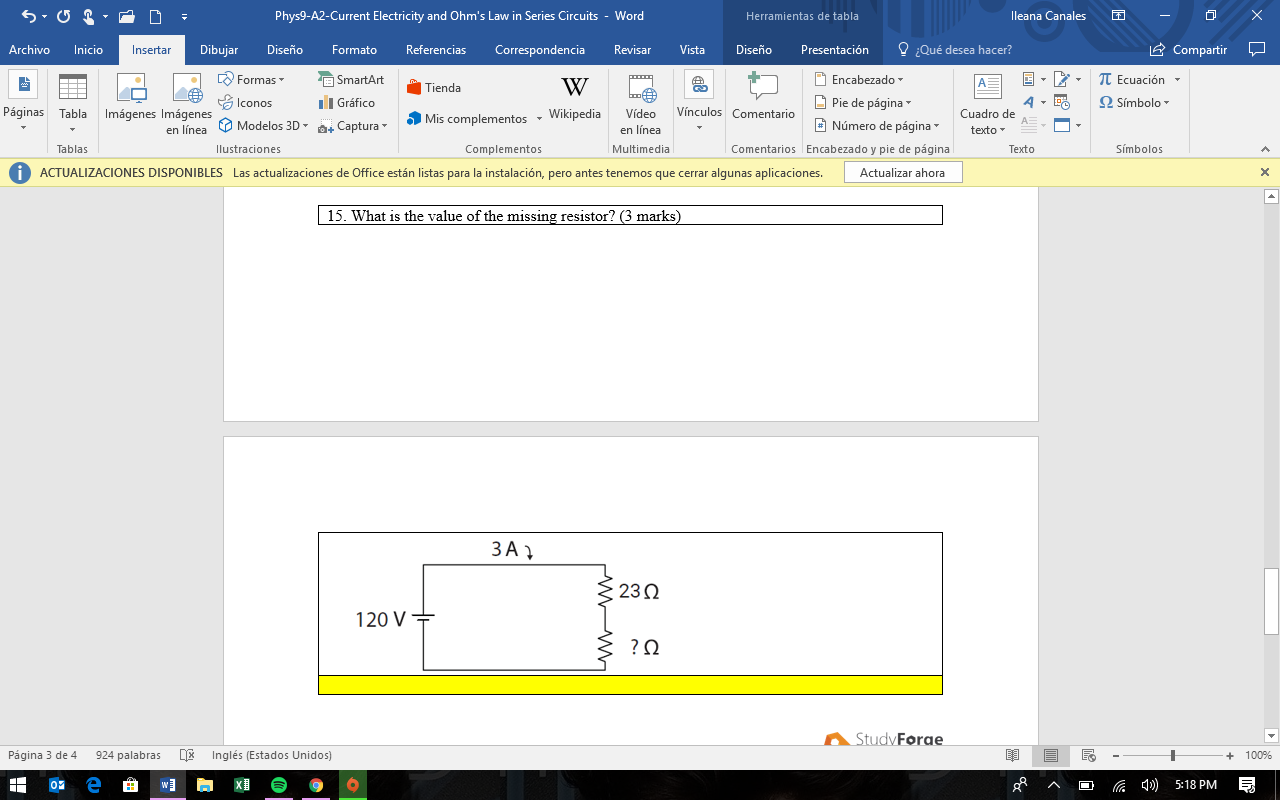Please help me figure out question 15 and explain it so i can understand it? look at the picture below for the question and information. thank you.

2 Answers
Explanation:
Since this is a series circuit, current in Amps must stay constant throughout the circuit.
So to find the Voltage at the
Subtract the given voltage at that resistor from the total voltage to find the voltage at the resistor we don't know:
Now to find the resistance at the unknown resistor, remember the current is still constant:
Explanation:
I agree with Hi that the unknown resistor has resistance of 17
https://www.maplesoft.com/content/EngineeringFundamentals/15/MapleDocument_15/Nodal%20and%20Loop%20Analysis.pdf
Scroll down to the section with the heading "Kirchhoff's Voltage Law (KVL)".
Kirchhoff's Voltage Law sums the voltage drops and gains across the 3 components. The discussion of the analysis of the circuit in Figure 2 applies well to your circuit. Read thru their discussion.
As you analyse the circuit in the clockwise direction, I encourage you to think of the voltage across the components. The voltage change as you compare the negative terminal to the positive terminal of the battery is +120 V. When the analysis takes you to a resistor, I encourage you to think not of the "voltage at the resistor" but of the "voltage drop across the resistor".
Ohm's Law allows us to determine the voltage across the
Going clockwise, notice that as the analysis encounters a resistor, the first terminal encountered is closer to the + terminal of the battery than is the other terminal. Therefore we have found a voltage drop with the value -69 V. Fortunate that it is negative since I said at the end of the previous paragraph that it "needs" to be negative.
Therefore the voltage loop equation is
Solving that:
Disclaimer: This is an introductory example for Kirchhoff's Voltage Law. Application to a more complicated circuit will require more complication in the assignment of polarity the expression for the voltage across resistors.
I hope this helps,
Steve


